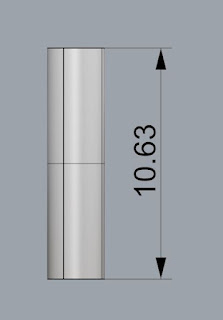The beginning of the end, i started measuring all my pieces with my digital caliper then readjusting my measurements in rhino or creating models from the start point.
Here is the "fork" component, creating through tracing an overhead views of the piece, then extruding and stacking them together, this was one of the hardest parts to recreate and was simplified due to very difficult to recreate minuscule details.
the "hood" part, another challenging element created with the fillet, bool eon intersection and bool eon difference tools. the wall edge needs to be slightly rounded to be 100% accurate but has proven problematic to achieve.


The flint piece, a simple extrude circle.
The flint spring a spiral that has been applied the pipe tool
The longer fork spring, again a spiral that has been applied the pipe tool
The "jet" piece for where the gas exits and flame exists, another update from the previous version utilizing the loft command to recreate the tip more accurately.
The Spark Wheel, i update this component again to recreate the wheels teeth that were previously difficult to understand by messing with the create with the star and trim tools. I never did understand how to recreate the microscopic grinding teeth in the center cylinder,
The largest element, "The Body" was created with a extruded oval and the spark wheel mounts made with the compound curve tool and line tool.
I then assembled the lighter with it's parts and used the gumball tools to explode the object.
Here the object is rendered and exploded in a alley setting where one might find a lighter.

























This turned out awesome. Great work, Julian!!
ReplyDelete